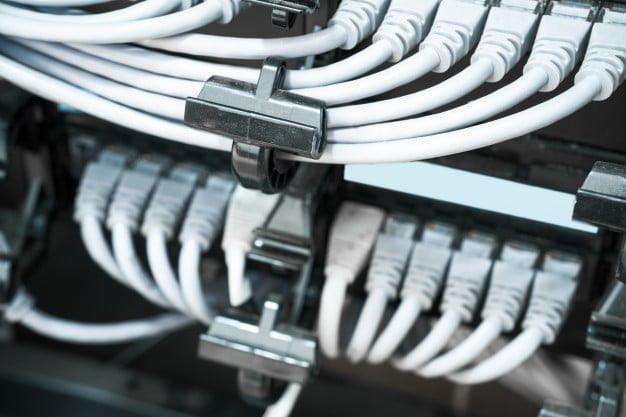Why Should You Get NAS For Plex: A Home Quarantine And Business Essential
by Arina Smith Technology Published on: 02 April 2020 Last Updated on: 27 August 2020

Because of the pandemic that we are currently experiencing. We have to follow the guidelines set by the government to prevent the spread of the virus. Discipline and cooperation are necessary so that hopefully. We can flatten the curve as fast as possible. One of the changes in our lifestyle is that we have to stay indoors and practice social distancing. Of course, it can be difficult for some. Especially for those who are used to socializing and going outside most of the time. So how can you keep yourself entertained inside the house? This is where Plex and having network-attached storage for it becomes useful. As you can see in this guide, having a NAS for Plex is one of the best ways to keep your data or multimedia safely and securely. You can even use it both for business and personal use.
What is Plex?
So what is Plex? To put it simply, Plex is a software that gives you the ability to make your own library of multimedia. It’s like having a media player and an organizational tool in one. You can use your computer to store and manage your data. But you will get the most out of your Plex if you use NAS or network-attached storage for it. With Plex and NAS, you’ll also be able to access your media such as music, videos, and pictures with any compatible device.
What is NAS?
NAS stands for network-attached storage, and as you can assume, it works like a cloud. This is because everyone who is allowed can access the data that you put in a network. It is also this same reason why NAS works for businesses as well so that employees can work together remotely.
Why Should You Get a NAS for Plex?
When you connect to a Plex server, you will be able to access your multimedia files. Using whatever device you want and even at the same time. Overall, NAS for Plex is an easy to use and affordable solution to manage data and multimedia. You don’t have to be very tech-savvy to understand using it. And there are no other purchases necessary for anyone or any devices that want access.
Therefore, if you are using it for managing a business. Users can access folders and files at the same time and can cooperate together once they connect to the network. This can be useful nowadays where everyone has to be at home. You also don’t have to worry about losing important data of your business because NAS becomes your back-up. Compared to a hard drive or USB drive, NAS uses two or more drives for copying the content of one drive over the other automatically.
If you’re not using NAS for a business, using it for your Plex server is also another easy and affordable way to manage and play your multimedia files. And because NAS also works as a back-up, you no longer need to copy your pictures, videos, or music on every device you have. If you have a large media library, using NAS for Plex will save you money as well because you don’t need other storage. You can easily stream your content to another phone or computer. It can also work on tablets or speakers throughout your home or remotely.
Imagine not needing to make multiple copies of large bytes of photos, videos, music, or Blu-ray collection but still not worrying that you’ll lose them. If you are in the creative industry who works remotely, you can save your music files, raw photos, Photoshop files, raw videos, and digital music easily and safely as well.
You can use cloud storage providers, but using NAS or NAS for Plex gives you more privacy and security because your multimedia and data stay in your home. Although, you can still choose to put it in the cloud. While NAS still lacks the tools that you can get on pricey cloud subscriptions, it is still adequate for the average user at a much lower price.
What to Consider When Getting NAS for Plex?
According to PrizedReviews, not all NAS models and processors are the same, especially if you’re using it to run Plex. And this still depends on the content that you want to stream. For example, the system may not be able to allow you to transcode the content for you if you stream a video on your phone or TV. Therefore, even if you want to watch 4K media, you won’t be able to get the quality you want.
If it is still confusing for you, here’s the much simpler explanation. The more affordable the NAS model is, the less powerful its processor is. This makes it unable to stream 4K videos or allow multiple connections to run smoothly.
Transcoding is what NAS does to stream a file to a device that doesn’t support the format such as 4K. An Intel Core i3 processor or higher can do 4K transcoding and any lower processor will surely struggle, especially with simultaneous streaming.
Therefore, if your multimedia files include 4K videos or large bytes of photos and music, you’re much better off with a powerful NAS powered by Intel. However, if those models are above your budget, you can still use high-end ARM processors, especially if your multimedia files aren’t that demanding. If you don’t have a lot of devices trying to connect, those processors are also good enough.
Besides the processor, the drive bays are also something to consider on NAS devices when you run them with Plex. At least two drives are enough so that you can keep your data and files safe and accessible even if one of the drives fails.
Speaking of safety, you might also want to protect your data using hardware-level encryption acceleration. This way, no one can steal your files and data even if someone steals your disks. File encryption is also especially important if you use NAS on a larger network. You can even get VPN services if you need to access your home network on other WiFi networks.







































































































